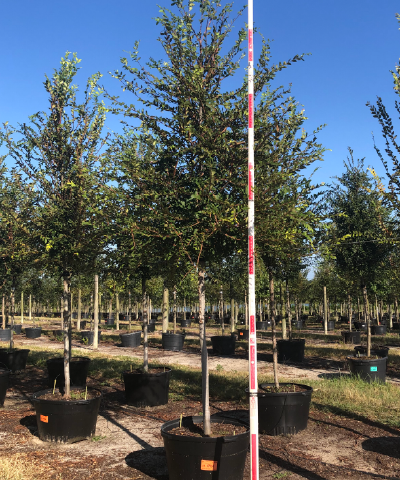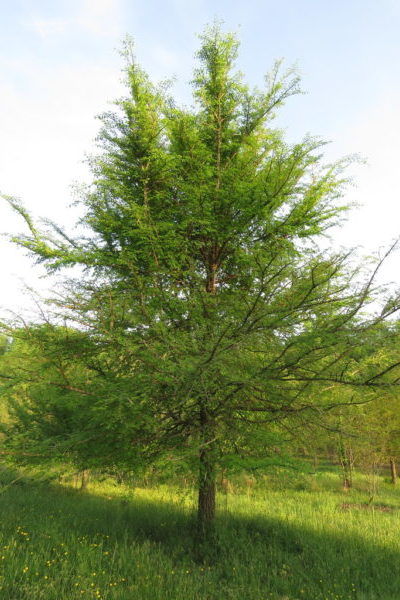Elm Winged

Ulmus alata
The Ulmus alata, commonly referred to as the Winged Elm, is considered unique because of its bark’s very broad, thin pair of “corky wings”. “Corky” generally starts to appear on Winged Elms after 1-2 years of age when grown from a seed; however, when cutting grown winged elms, “corky” can apppear at the liner stage. The wood of a Winged Elm is very flexible and springy; however, it is also hard and resists splitting.
While its leaf shape and size is overall very similar to Chinese elms (Ulmus parvifolia), the leaves are slightly thicker. Because its branching habit tends to be more disorderly in terms of structure, it provides a unique appearance in dormancy when compared to a Chinese elm.
Because the Winged Elm grows in multiple types of climates, its mature size is dependent on its environment. The Winged Elm is adaptable, and can grow in any soil rather quickly. In order for the Winged Elm to remain sturdy, it must be pruned regularly at an early age to minimize double or multiple trunks from forming. While a native elm to the Southeastern United States, Winged Elms can be found in various places, because their need for maintenance is minimal, adapting to poor drainage, and partial shade. The Winged Elm can even tolerate air pollution. This tolerance makes these trees ideal for big cities, parking lots, strip malls, and residential neighborhoods.

Ornamental Characteristics:
Native Origin:
Southeastern United States
Common Names:
Winged Elm, Corked Elm, Wahoo Elm
Description:
Hardy Range: 6A – 9B
Mature Height: 45’ – 70’
Mature Spread: 30’ – 40’
Breakage: resistant
Shade: provides ample shade
Ornamental Characteristics:
Winged Elms can grow up to 50 feet high; however, when grown freely in the woods, there are cases where they have grown up to 90 feet. Winged Elms can have a spread of up to 40 feet, making it ideal for creating shade in landscapes. Its acute leaves are a dark green color on top and pale underneath with a serrated edge. The leaves of this tree may be hairy. In the fall, this tree turns bright yellow, marking a beautiful transition to the new season. Its flowers are burgundy. Winged Elms produce fruit in the spring.
Environment:
Soil: clay; sand; loam; alkaline; acidic; extended flooding; welldrained
Exposure: full sun, partial sun, or partial shade



